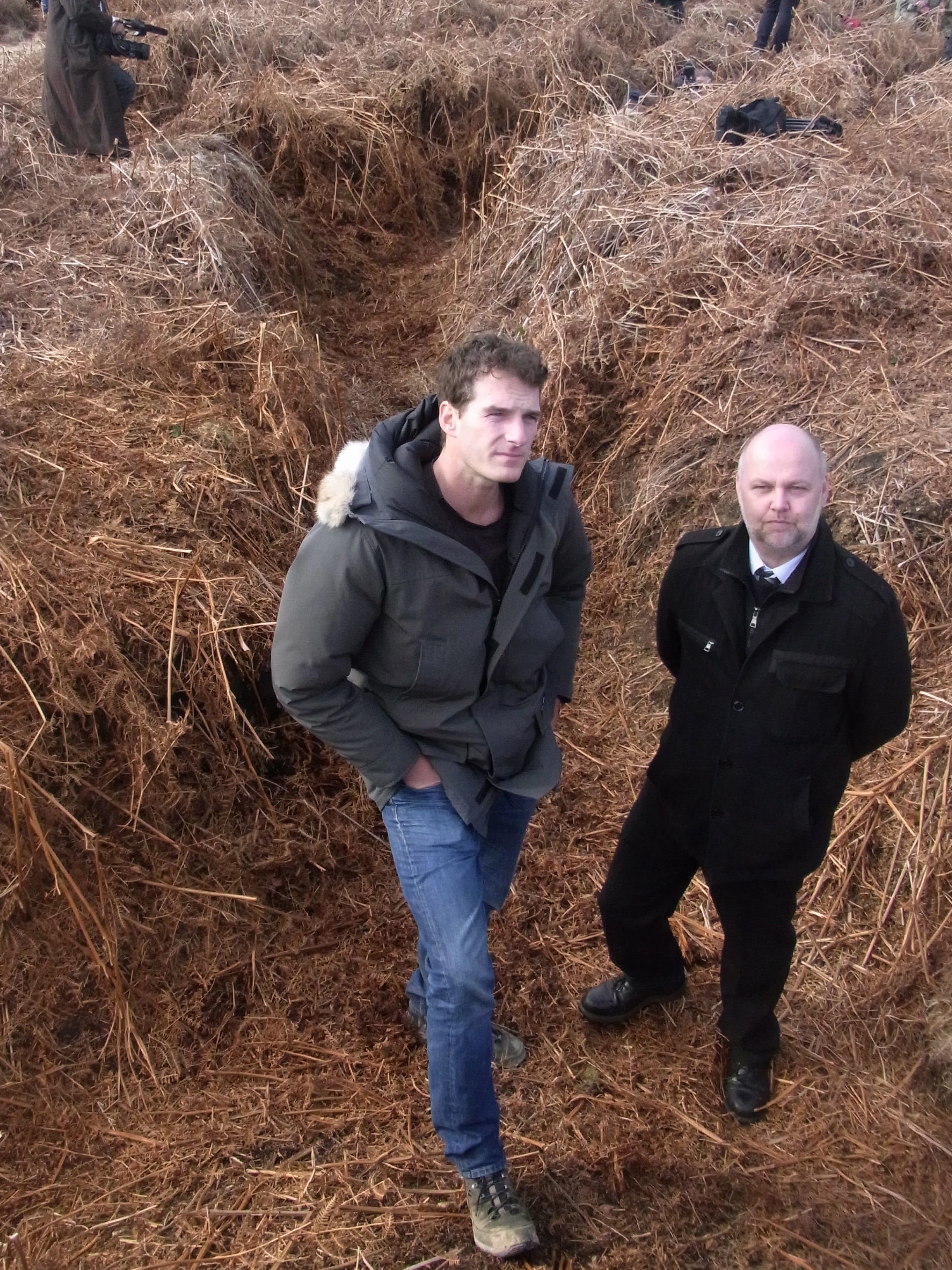A practice battlefield used to train soldiers before they were sent to the Western Front has been discovered on England’s South Coast after being hidden for decades in dense undergrowth.
The remains of opposing rows of trenches separated by a flat expanse of no-man’s land are clearly visible on a stretch of heathland near Gosport in Hampshire.
They were identified by Rob Harper, Conservation Officer at Gosport Council, after he spotted a network of zig-zagging lines on a 1951 aerial photograph and called in archaeologists.
He said: “It was one of those jaw-dropping moments. You’re talking an area of 500 metres by 500 metres. Most of of what you see on the aerial plan still seems to be here.”

Dan Snow with Rob Harper in one of the trenches found near Gosport
Until a few months ago, the origin of the earthworks covered in gorse and ferns had been a mystery to local people walking their dogs or picnicking on the land.
Dan Snow, the television historian and President of the Council for British Archaeology, says this is “an exciting and important” find.
He told Centenary News: “It is a remarkable site and it’s extraordinarily extensive. The traditional idea that soldiers were gathered up from some northern city and chucked at the enemy front line willy nilly is not true at all.
“What’s going on here is state-of-art training; relentless, intensive training turning these young conscripts from civilian life into as close as you can get, battle-hardened veterans.”
Covering the size of 17 football pitches, the former training area is open to the public but still owned by Britain’s Ministry of Defence.
Volunteers from the armed forces are now working with the Council for British Archaeology and conservationists from English Heritage to map the site for future generations.
News of the discovery heralds the start of a campaign, called Home Front Legacy 1914-18, to identify and preserve unrecorded First World War sites across the UK before they are lost forever.
The project is coordinated by the Council for British Archaeology, with funding and support from English Heritage, Historic Scotland and the Welsh Government’s conservation service, Cadw.
Volunteers, including schools and local history groups, are being urged to join the experts in finding requisitioned factories and drill halls associated with the Great War, along with other vulnerable sites such as camps and observation posts.
Wayne Cocroft, English Heritage’s First World War expert, describes this aspect of the conflict as “virtually a blank chapter: “The Home Front Legacy 1914-18 campaign is about bringing together our national expertise and local people’s knowledge to fill in the gaps and for the first time properly record the remains of the war that are still around us today.”
Details of how to get involved can be found by clicking here
Source: English Heritage
Video and images: Peter Alhadeff, Centenary News
Posted by Peter Alhadeff, Centenary News
